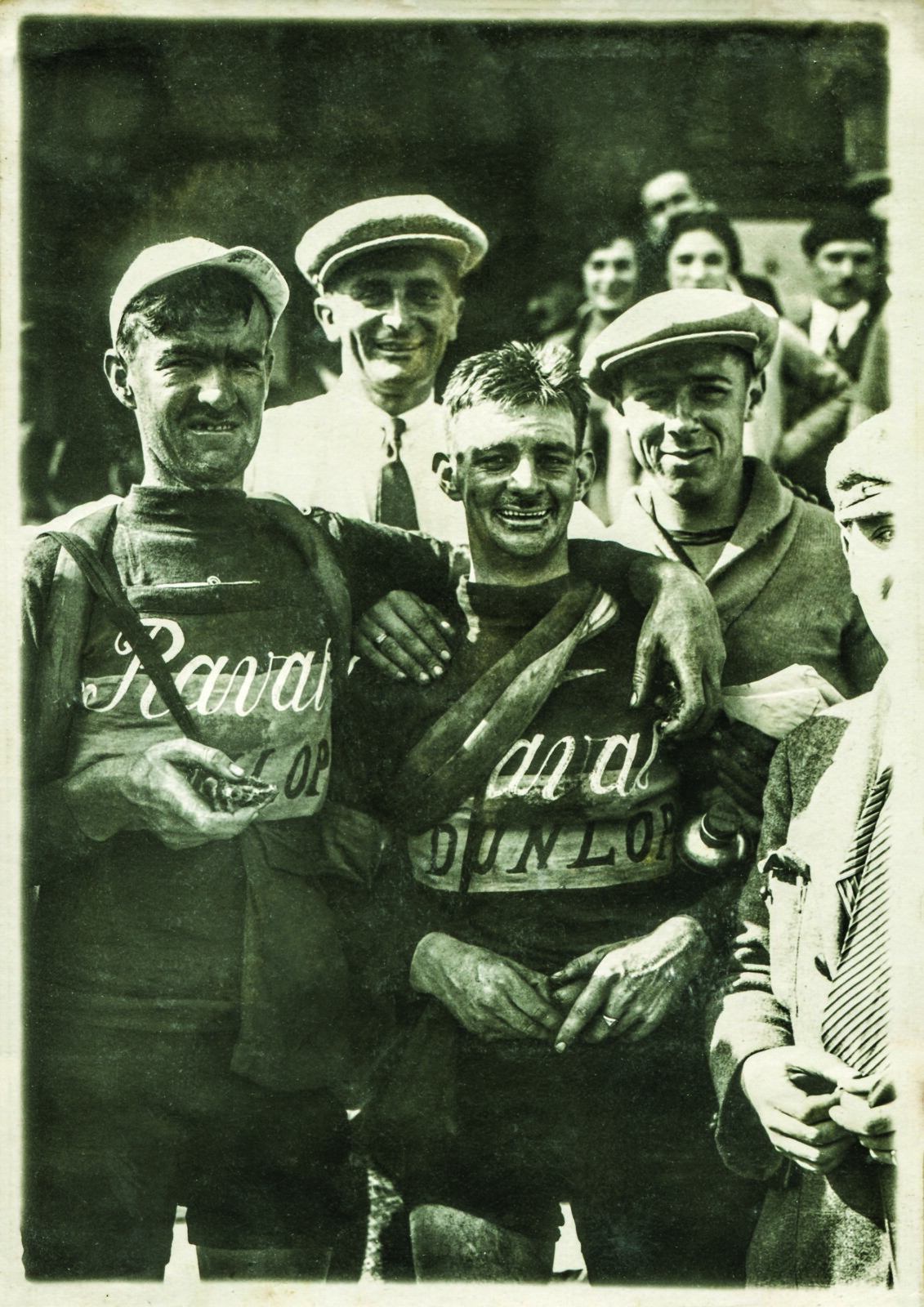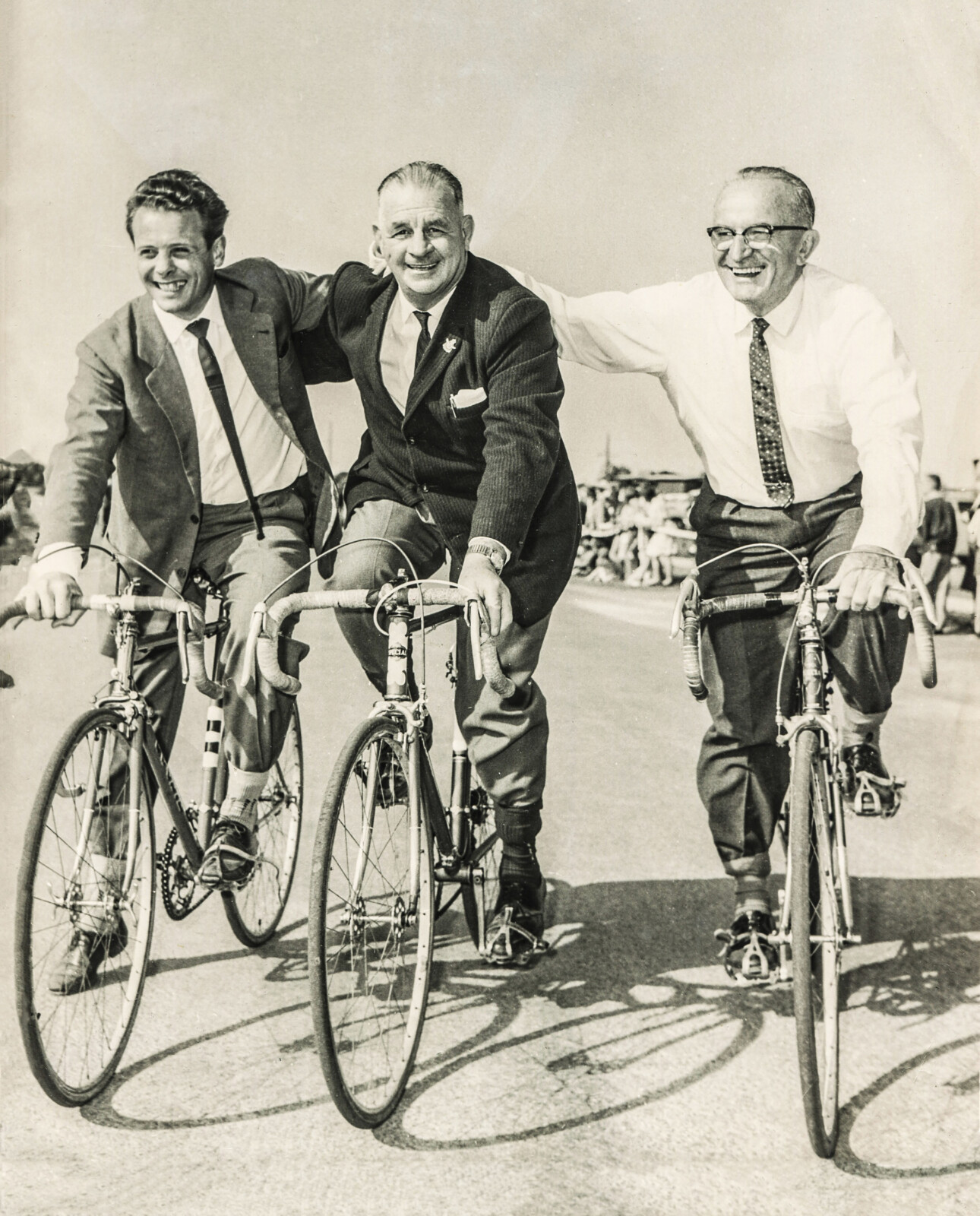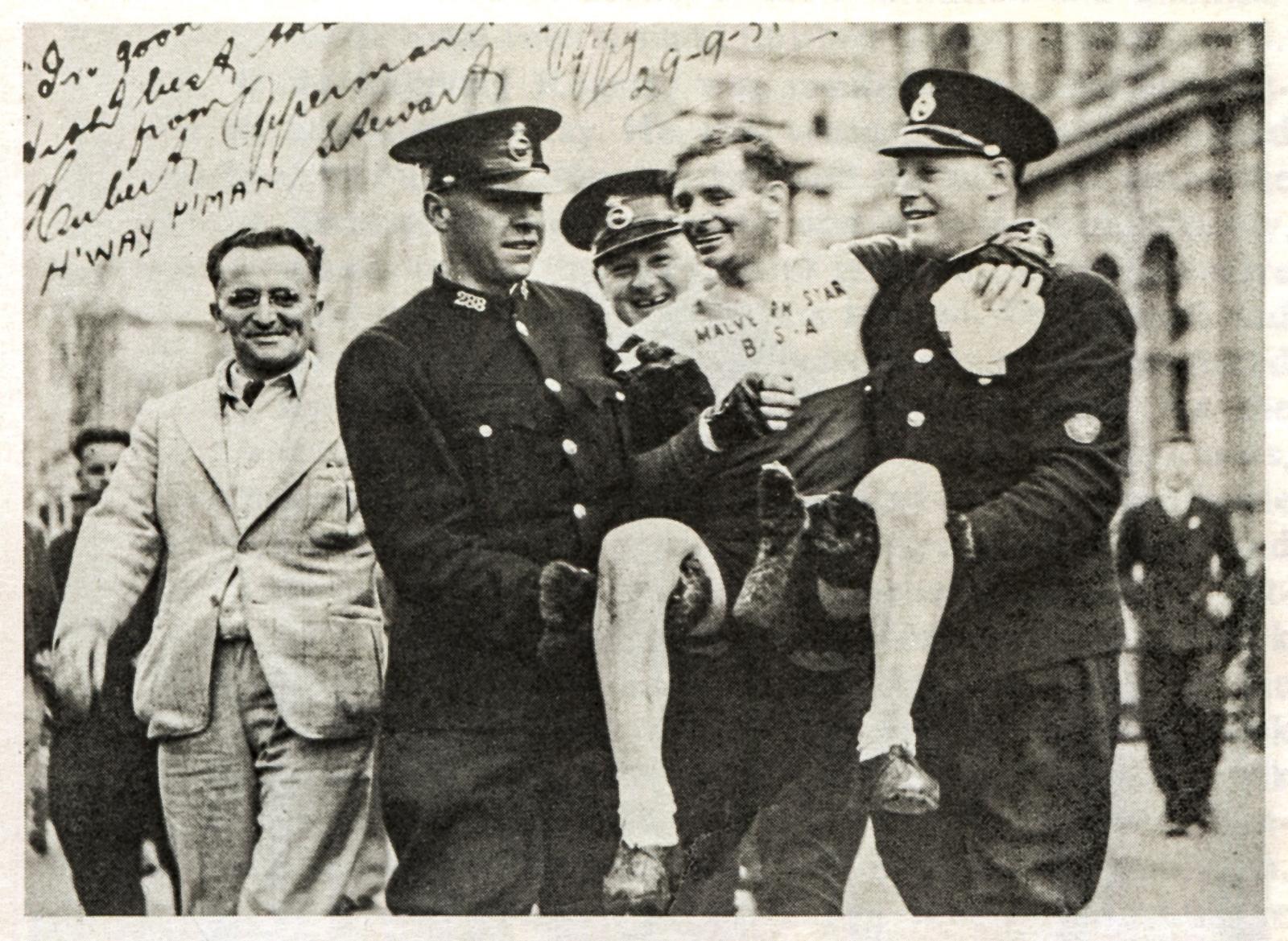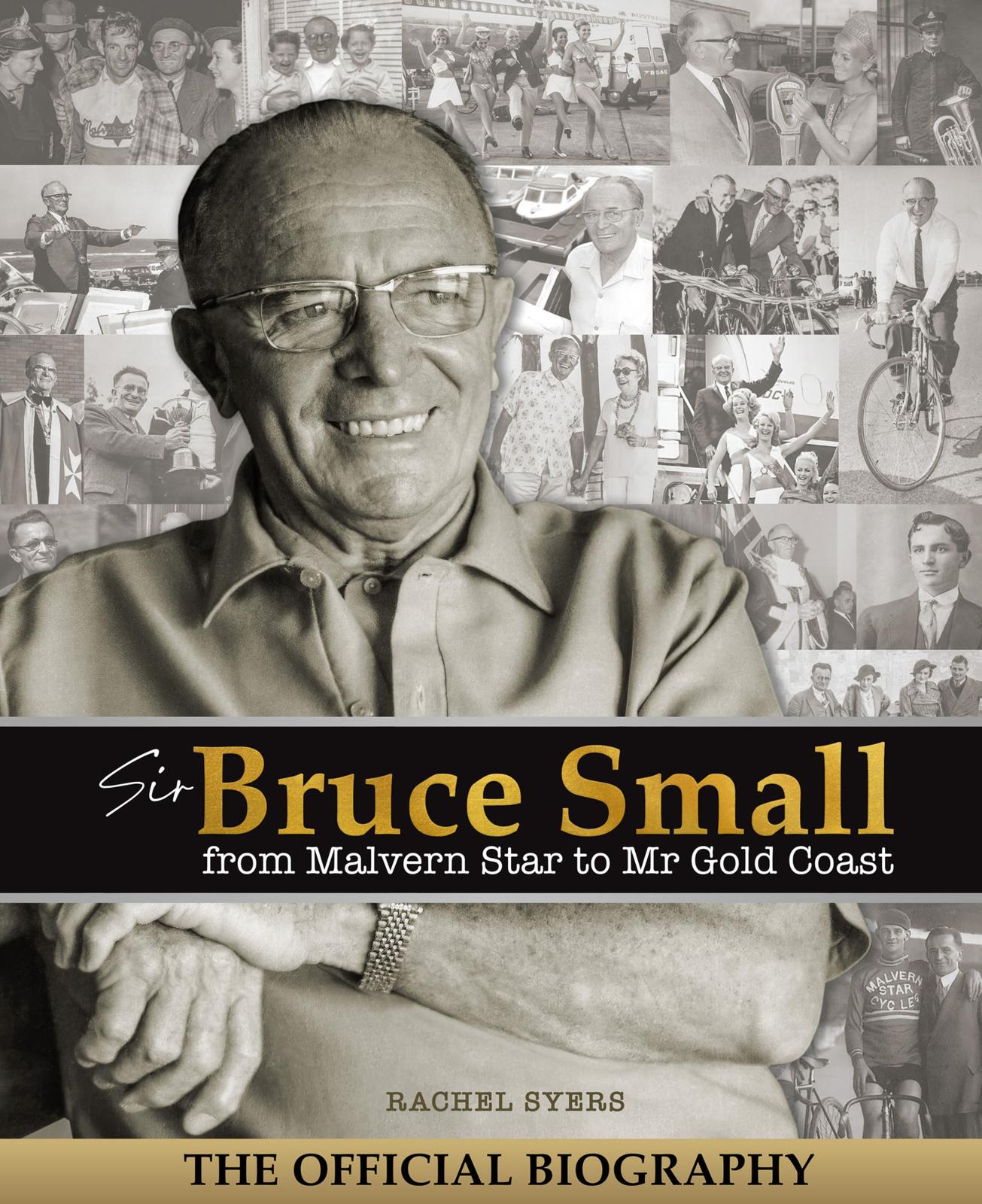Journalist and author Rachel Syers has painstakingly poured the past 12-months into penning one of Australian cycling’s most fascinating and inspiring stories, the life and times of Sir Bruce Small.
Having recently enjoyed the pleasure of reading an advance copy of the Sir Bruce Small biography, the first thought was “this is destined to become one of the most important books on Australian cycling history.”
With the kind permission of talented author Rachel Syers, this extract is from pages 44 – 46 of the riveting and wide-ranging book. It’s a section that covers the relationship between Bruce and Oppy that reveals so many more layers to how Oppy became a cycling icon, thanks to Bruce.
It explains the context behind Bruce travelling to France with the first Australian Tour de France team in 1928, in the role of manager to Oppy, Malvern Star boss and radio reporter, but ended up running the whole show because the person appointed to look after the team was incompetent.

The book is available in hardcover ($69.95) or softcover ($49.95) through www.sirbrucesmall.com.au and bookstores.
Oppy was team captain, Ernie Bainbridge, Percy Osborn and New Zealander Harry Watson. Then he was officially made manager of the 1931 Australian Tour de France team.
Extract from the chapter ‘Tour de France Trauma To World Phenomenon’:
The 1928 Tour de France is well documented, but the impact Bruce had on Australia’s part in it has never been pieced together until now and as it turns out, he became the backbone of the entire team. Not only was Bruce Oppy’s manager, he was also appointed the ‘Special Representative’ for Melbourne radio station 3LO, calling daily reports of the race’s progress. He also cabled daily reports direct to his Bruce Small Pty Ltd office back home, where they featured on a giant sign for the public to read as part of a display in the office’s front store windows facing the street.

Oppy also wrote of Bruce doing ‘a triangle job’ – ‘of journalist for Australian papers, driver of a car for 3300 miles (all other newspapermen had a chauffeur) and chief morale builder’. In the absence of a team manager on the ground, Bruce also stepped in when the team needed official representation. It was in this last role that Bruce really saved the day, according to Oppy.
The fact that it was Bruce’s first overseas trip didn’t seem to place any limitations on his confidence. With the red-tape mess that was to plague their chances, Bruce became the team’s hero, fighting for their rights to race. More than 60 years later, Oppy still spoke of the difference Bruce made for the four cyclists battling in the race of their lives, saying: Bruce Small cajoled, wheedled, threatened, pleaded each evening, after every stage, to keep us in the race.

Another setback for the team was the rules that year – later accepted as a period of the most dictatorial in its history, resulting in ‘severe infliction on competitors’. Teams on the non-mountain stages had to depart at 10 minute intervals. Each team was allowed up to 10 men. Oppy broke down the problematic ruling in his book: While no one doubted the supremacy of the ultimate winner … it was obvious to the bicycle-educated European public that it was a grossly unfair system, which handicapped strong riders teamed with weaker colleagues. The formula was ridiculed before, during and after the race, and reeled under the weight of public disfavour. It could not though, be changed in 1928.
The formula was changed to shorter daily races in 1929, but in 1928 it was set in concrete. Unfortunately for the Australasian team, regardless of how awesome their foursome was, ‘It was as appropriate – particularly during team time trial stages – as four men against 10 in a tug-o-war’, according to Oppy.
He wrote about Bruce’s disgust at the situation: Just 10 days before this crime against competitive cycling … Bruce Small arrived in Paris, took one angry look at our penalties, metaphorically spat on his hands, and sought alleviation. We entered into a week of dramatically changing hopes and disappointments. His efforts uncovered the network of inter-company arrangements which had left us stranded on the beach of their contractual obligations.
Bruce’s investigation revealed an Australian committee representative forgot he had earlier assured team sponsor Dunlop Australia that two cyclists would be sufficient to send over and be joined by enough French cyclists to make up a proper sized team. In reality, that was never going to happen because local French sponsor, Ravat-Wonder, would never agree to spend the money organising it.

When Bruce confronted the French Dunlop hierarchy, they were too indifferent to act. And that was just the tip of the iceberg for problems the Aussies faced, from no masseur to being denied equipment and sleeping in a cramped attic they couldn’t stand up in. The Referee article on August 1, 1928, reported the forgetful committee rep even told the riders they were in for ‘a hell of a time’: Since the arrival of Bruce Small a week ago, there has been a considerable change towards the riders because of the personal effort he has put forward, but there is still much that can make any race they take part in nothing short of murder.

It was truly ‘grim, relentless and tiring’, according to Oppy in his book: We leaned on the presence of Bruce Small like rookie pilots on a 1000-hour veteran. In an article for The Australian Cyclist, Oppy also detailed the extent the team relied on Bruce’s influence: As we sweated through the heat of the South – over the cobblestones of the North – up the snow-capped peaks of the Alps and down the treacherous metailed slopes of the Pyrenees, it was always for Bruce that we looked, it was always for the thumping pistons of his hired Donnet (French car) that we listened, for when he was around we always felt that his unquenchable spirit and unflagging energy and optimism were thrusting on the pedals with us.
This is an extract from the recently released title ‘Sir Bruce Small: From Malvern Star To Mr Gold Coast’ by Rachel Syers. The book is available in hardcover ($69.95) or softcover ($49.95) through www.sirbrucesmall.com.au and bookstores.



